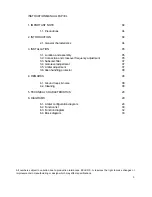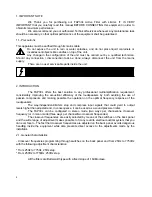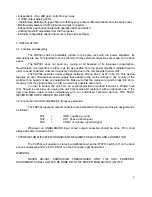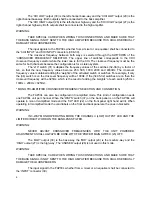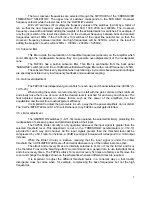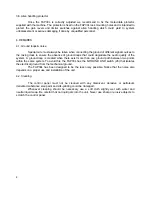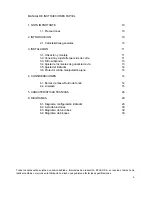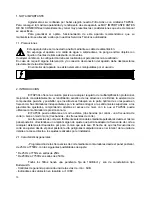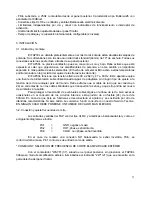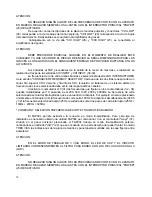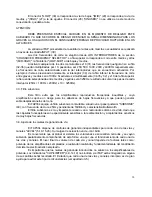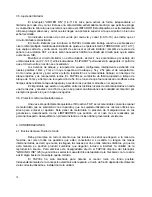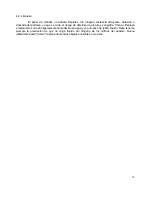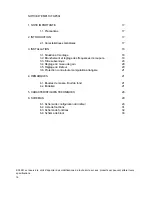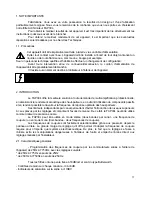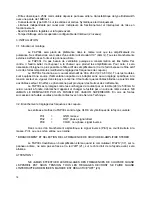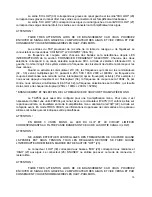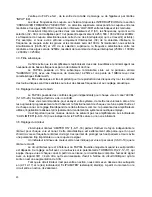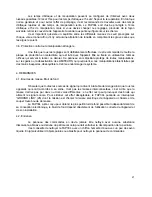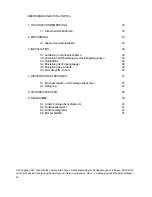
7
The two crossover frequencies are selected through the SWITCHES of the 'CROSSOVER
FREQUENCY SELECTOR'. The upper line of switches corresponds to the 'MID-HIGH' crossover
frequency selector while the lower one is for the 'LOW-MID' selector.
Both 'x10' switches (31) multiply the frequency values of the switches (32-36) by a factor of
ten, so that the new frequency values become 250, 500, 1000, 2000 and 4000Hz. The crossover
frequency value will be obtained adding the 'weights' of the activated switch or switches. For example, if
only the (34) switch of the lower line selector is on the crossover frequency between bass and medium
frequencies will be 100Hz. If the (34-35-32- x10) switches of the upper line selector are on then the
crossover frequency between medium and high frequencies will be 3250Hz, which is the result of
adding the 'weights' of each switch (250Hz + 2000Hz = 3250Hz).
3.3. Subsonic filter
This filter avoids the reproduction of unaudible frequencies (subsonic) on the amplifier which
could damage the loudspeakers because they can generate over-displacement of the loudspeaker
cone.
The FAP30L has a built-in subsonic filter. This filter is switchable from the back panel
'SUBSONIC' switch (40) and it is a -18dB/octave Butterworth-type filter with a cut-off frequency of 25Hz.
The subsonic filter is very important when reproducing vinyl records because audio cartridges
are specially sensible to very low frequency feedback and acoustical coupling.
3.4. Gain level adjustment
The FAP30L has independent gain controls for each way and channel labeled as 'LEVEL' (5-
10-15-20).
When testing the system, we recommend you to start with the gain controls at their minimum
and slowly raise them, one at once, until the desired level is reached for each way and channel. The
final adjusted values depend on diverse factors such as the power of the amplifiers, the final
equalization and the electro-acoustical system efficiency.
It is important to adjust the gain levels in such a way that the power amplifiers do not distort.
The 'CLIP-LIMITER' LEDs (4-9-14-19) will lit whenever any FAP30L output gets distorted.
3.5. Limiter adjustment
The 'LIMITER ON' switches (1-6-11-16) make operative the selected limiter(s), protecting the
loudspeakers of excessive power and distorted signals at their input.
The FAP30L limiter circuitry is only operative whenever the input signal is greater than the
selected threshold level. This adjustment is set on the 'THRESHOLD' potentiometers (2-7-12-17)
provided for each way and channel. All the input signals greater than the threshold level will be
compressed by a 30:1 ratio; for instance, a 30dB input signal increase will correspond to a 1dB output
increase.
While the limiter circuitry is inactive, meaning that the input signal is under the limiter
threshold, the 'CLIP/LIMITER' LEDs are off and will lit whenever any of the limiters become active.
The attack and recovery times are internally selected to 14ms or 7ms the former and 5s or
2.5s the latter. To avoid the 'breathing effect' we recommend, as a general rule, to use fast attack times
and slow recovery times. The FAP30L attack 14ms and recovery 5s times are factory set. Remove the
cover and change the bridges shown on the schematics whenever different times are required.
It is important to adjust the different threshold levels in a coherent way so that tonality
divergence does not arise when, for example, compressing the bass frequencies but not the high
frequencies.
Содержание FAP30L
Страница 1: ...INSTRUCTION MANUAL MANUAL DE INSTRUCCIONES NOTICE D EMPLOI BEDIENUNGSANLEITUNG FAP30L ...
Страница 2: ......
Страница 32: ...32 6 3 Function diagram 6 3 Diagrama de funciones 6 3 Schéma de fonctions 6 3 Funktionsdiagramm ...
Страница 33: ...33 6 4 Block diagram 6 4 Diagrama de bloques 6 4 Schéma de blocs 6 4 Blockschaltbild ...



